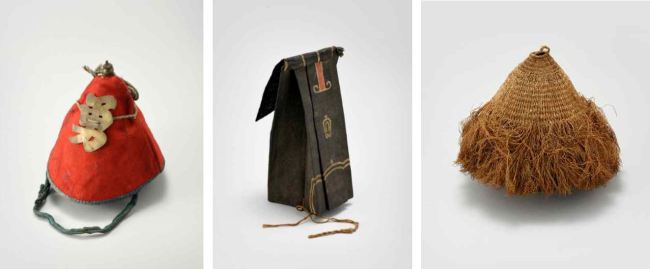When German merchant H.C. Eduard Meyer (1841-1926) was appointed an honorary consul to Joseon in the late 19th century, the country’s various hats were what fascinated him the most.
According to the National Research Institute of Cultural Heritage, the German thought that Joseon (1392-1910) was the only country in the world that showed an individual’s social class via hats. Meyer went on to collect an array of hats along with numerous items of the time.
 |
Hats from 19th-century Korea. From left: gunryebokdagi, a hat worn by a soldier dealing with prisoners; jinhyeongwang, worn by musicians, and songnak, worn by Buddhist monks. (National Research Institute of Cultural Heritage) |
The two recent reports by the NRICH detail the institute’s research on some 3,000 objects currently kept at the Museum fur Kunst und Gewerbe Hamburg and Museum fur Volkerkunde Hamburg, including Meyer’s hat collection. The two museums obtained the said items via donations by Meyer and other individuals in addition to their own efforts to unearth such relics.
As Meyer had believed, Joseon was a kingdom in which one’s hat was directly related to one’s class. Gat, for example existed in various sizes and shapes, indicating the social status of the wearer.
In August, a local gallery claimed to have discovered a never-before-seen portrait of Empress Myeongseong, whose authenticity came under dispute. Those who claimed the portrait was genuine pointed out that the hat worn in the portrait was not worn by commoners of the time.
The German museums’ collection include gat worn by musicians, Buddhist monks and what is now roughly relevant to military police. Among other items in the collection are armors -- which also indicate the social class of the owner -- maps and fabrics of the time.
The NRICH’s reports wrap up the decades-long project by the NRICH to survey Korean heritage found outside the country. A total of 36 reports have been produced.
The reports are available at http://portal.nrich.go.kr in pdf form.
By Yoon Min-sik
(
minsikyoon@heraldcorp.com)








